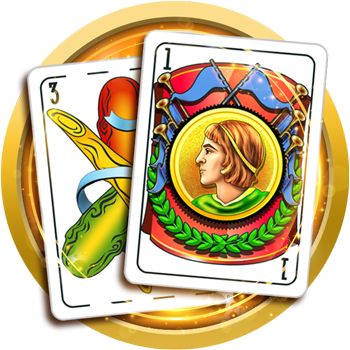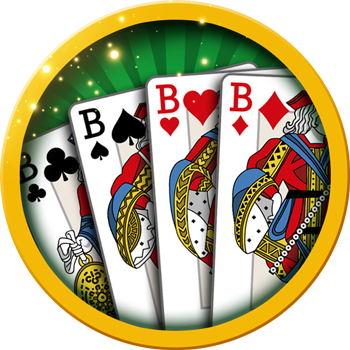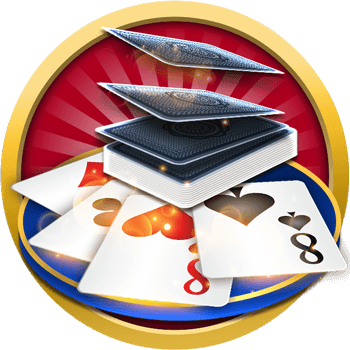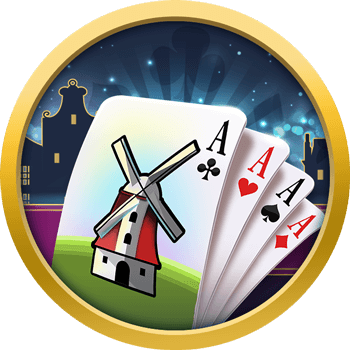Scopa Online
Home »
Players and cards
- Italian deck with 40 cards is used, with cards grouped in 4 suits (swords, clubs, cups, coins).
- Each suit in the Italian deck contains the following cards: 1, 2, 3, 4, 5, 6, 7, Jack, Knight, King.
- Each card has a capture value, which is used while playing the cards. The cards with a number have the same value, Jack is 8, Knight is 9, and King is 10.
- Each card has also Prime (Primiera) value, which is used at the end of a hand.
| Card | 7 | 6 | 1 | 5 | 4 | 3 | 2 | King | Knight | jack |
|---|---|---|---|---|---|---|---|---|---|---|
| Prime value | 21 | 18 | 16 | 15 | 14 | 13 | 12 | 10 | 10 | 10 |
Dealing
- The dealer gives 3 cards initially to all players; also, the dealer places 4 cards face-up on the table.
- When playing with 4 players, the cards are dealt and played in a counter-clockwise direction.
- After dealing each player can only see the cards in his hand, and also the cards face-up on the table.
Playing cards
Players play in turn (in a counter-clockwise direction), each one placing 1 card on the table trying to capture some of the cards on the table and make a trick.
Taking new cards
After playing the 3 cards they have, the players obtain 3 more cards from the deck of cards that are not used yet. This process is repeated until all cards are played.
Capturing conditions
Trick-taking (capturing) is based on the card value; the suit is not relevant for capturing. The player either captures 1 card with the same value, or few cards with total value equal to the played card.
For example, a player can capture 5 of coins card laying on the table by playing 5 of cups card from his hand. Also, a player can capture both 5 of coins and 2 of swords cards laying on the table by playing 7 of cups card from his hand.
Playing without capturing
Playing a card that captures is not mandatory; if the player plays a card that cannot capture, this card remains on the table. Thus, the number of face-up cards on the table increases.
Scopa
It could happen that a player plays a card that captures all cards on the table. This is called Scopa. The next player should place a card on the table, since there would be no cards for capturing.
Last cards on the table
After the final card is played one of the following happens:
- If the last card captures all available cards they go to the last player (it is called Scopa).
- If 1 or more cards remain on the table, they are automatically taken by the player who most recently captured cards.
Scoring
At the end of a hand the teams review the captured cards. For each of the conditions listed below, a team that meets it scores 1 point:
- Capturing more than half of all the cards (21+) – 1 point; none – if cards are 20-20.
- Capturing more than half of the cards in the Coins suit (6+) – 1 point; none – if cards are 5-5.
- Capturing the 7 of Coins card (Settebello) – 1 point.
- Having a Prime (Primiera) with higher value – 1 point.
A Prime is a combination including 1 card from each suit, using the card with the highest Prime value. The Prime value of a team is the sum of Prime values of the cards in the combination.
The Prime point is won by the team that scored a higher Prime value.
The Prime value is calculated for a team only when they have captured at least one card from each suit.
If a team or player missed capturing a card from one or more suits, then no Prime value is calculated for them, and they cannot score a Prime point.
If the Prime values of both teams are equal, then the Prime point is not awarded.
In addition, teams receive 1 point for each Scopa they performed (capturing all cards on the table).
Points won this way for a hand are added to the team’s score, and then a new hand is played.
Winning
The conditions for winning are as follows:
- The first team that reaches 11 or more points at the end of a hand wins.
- If both teams reach 11 in the same hand, the team with more points in the last hand wins.
- If both are equal, teams play further hands until one team has more points at the end of a hand.




